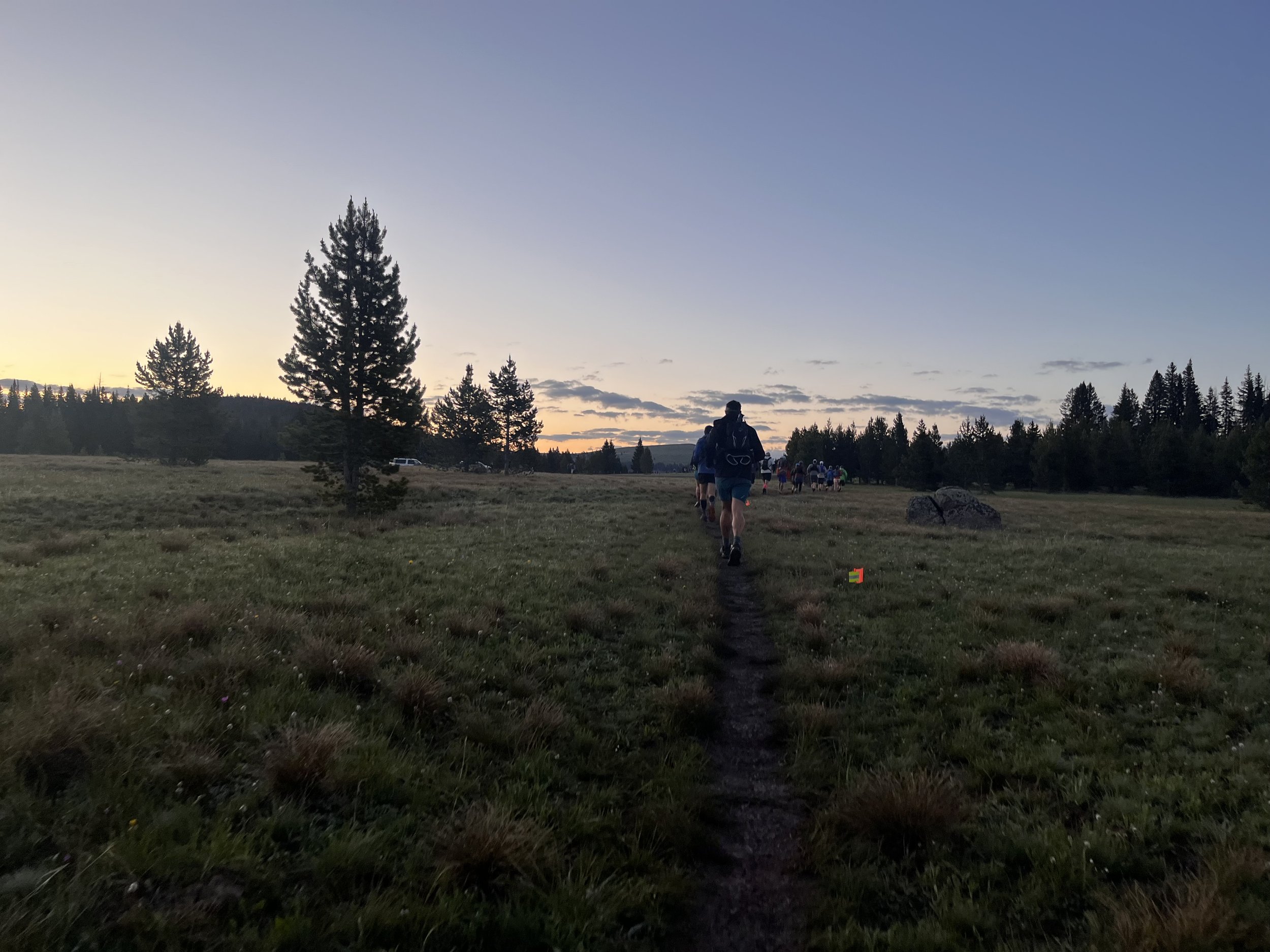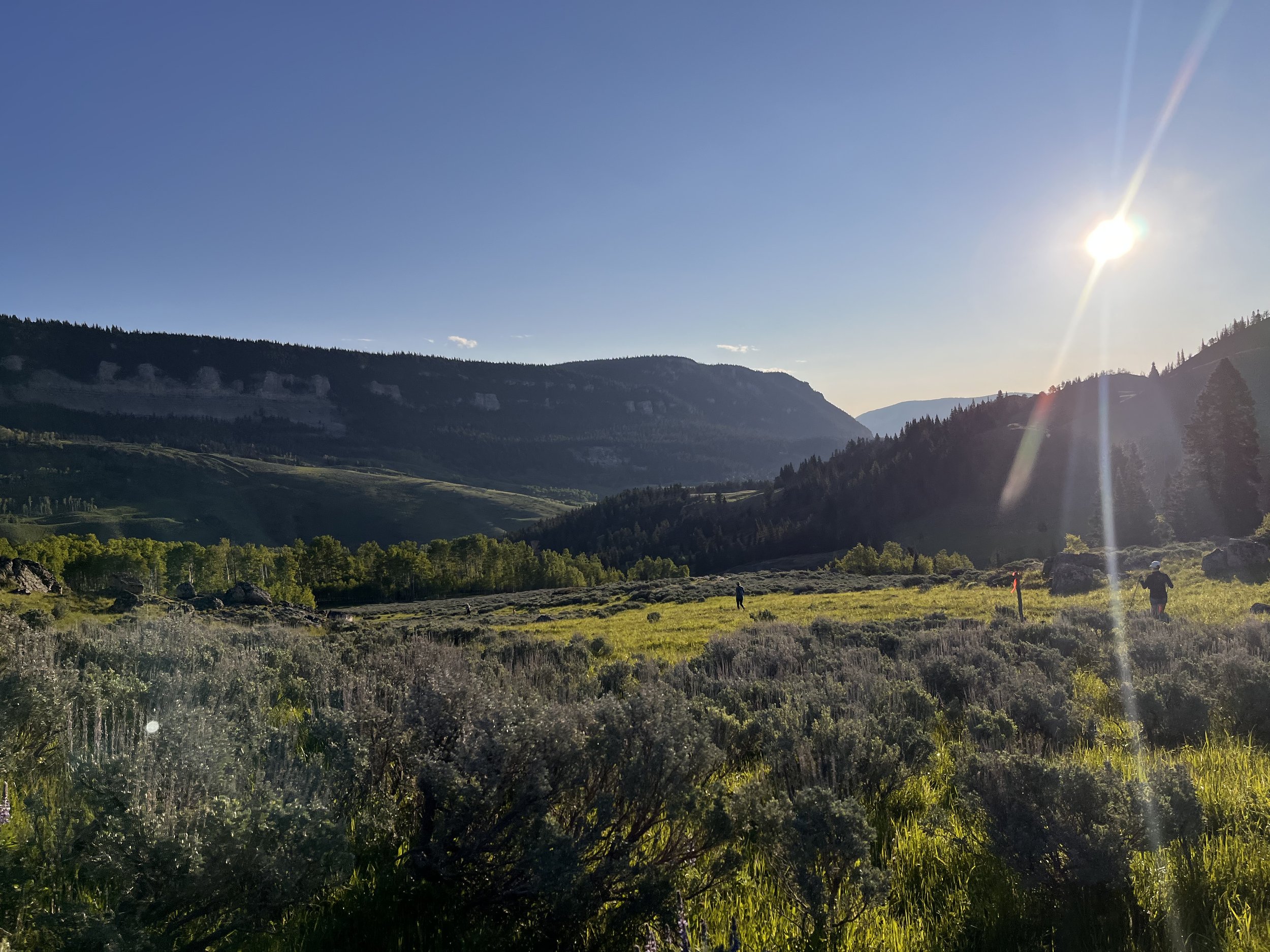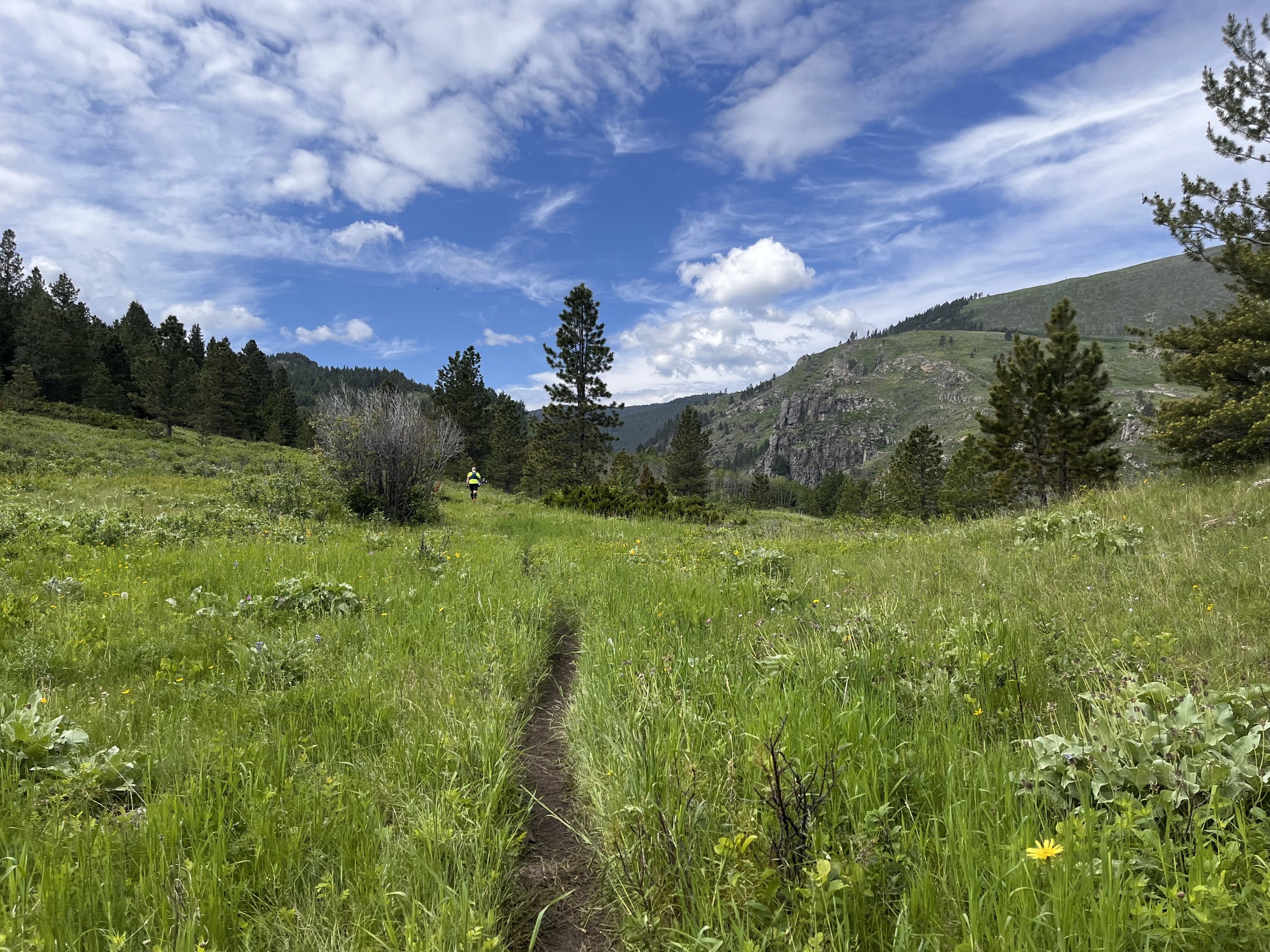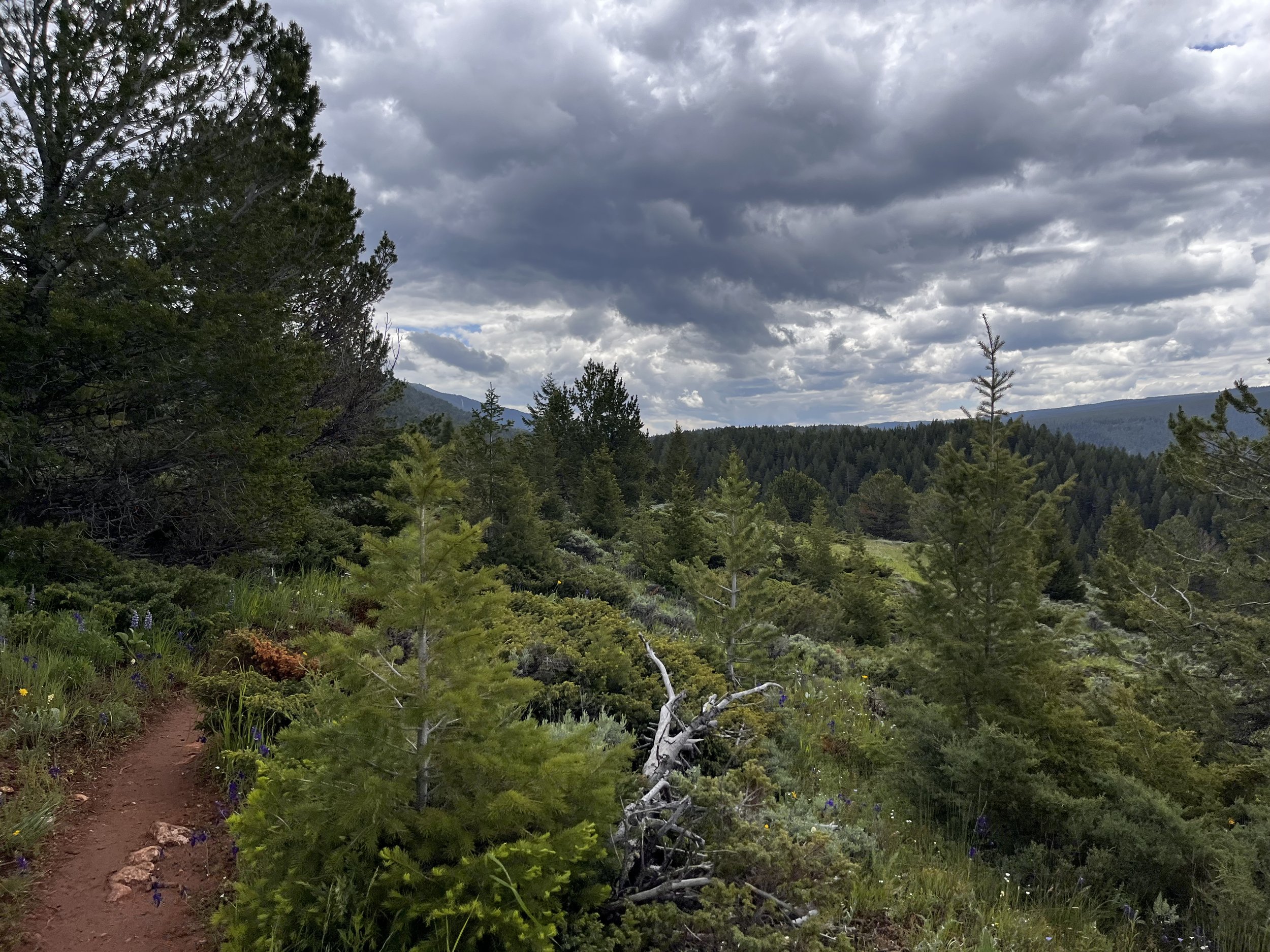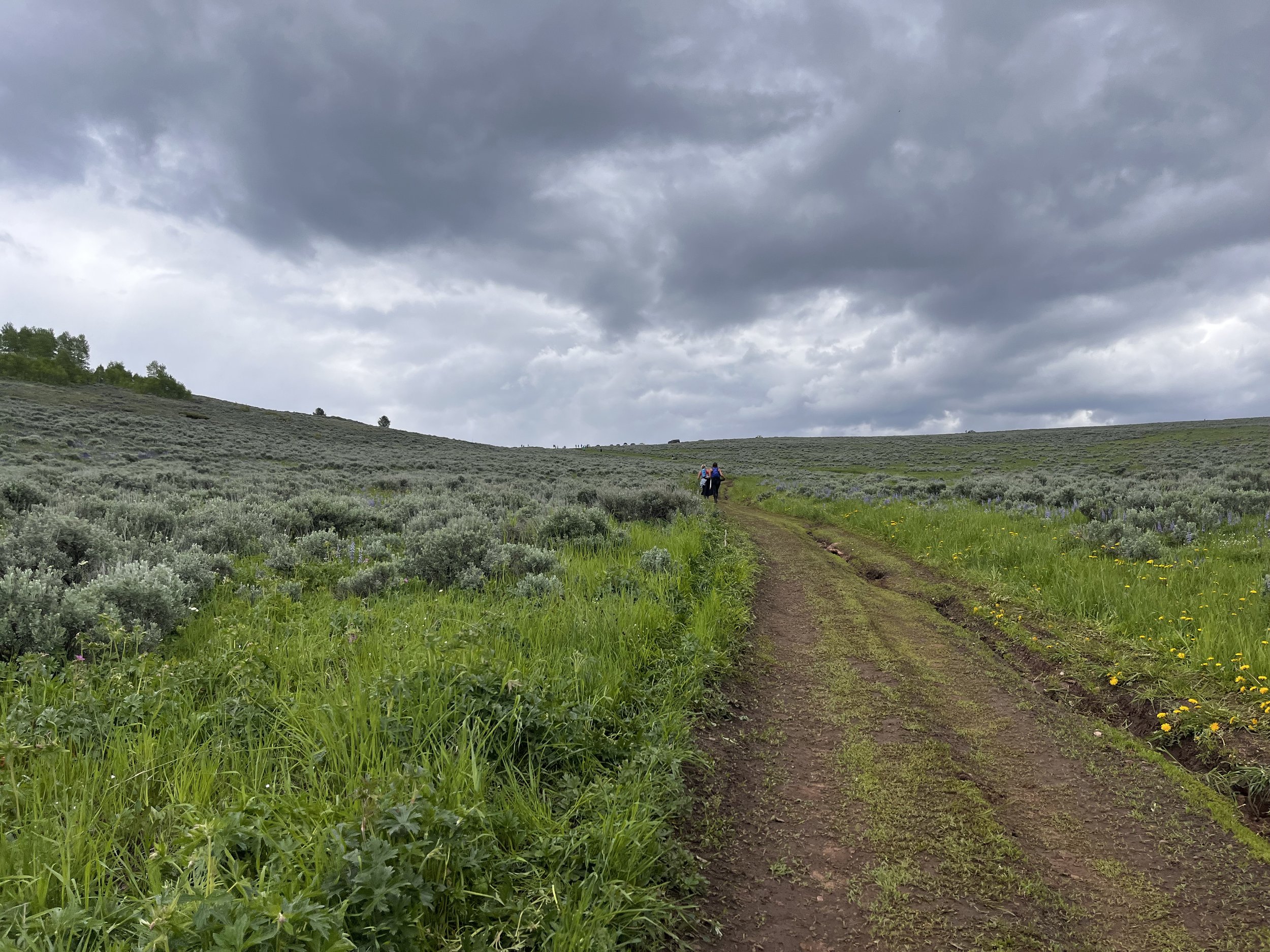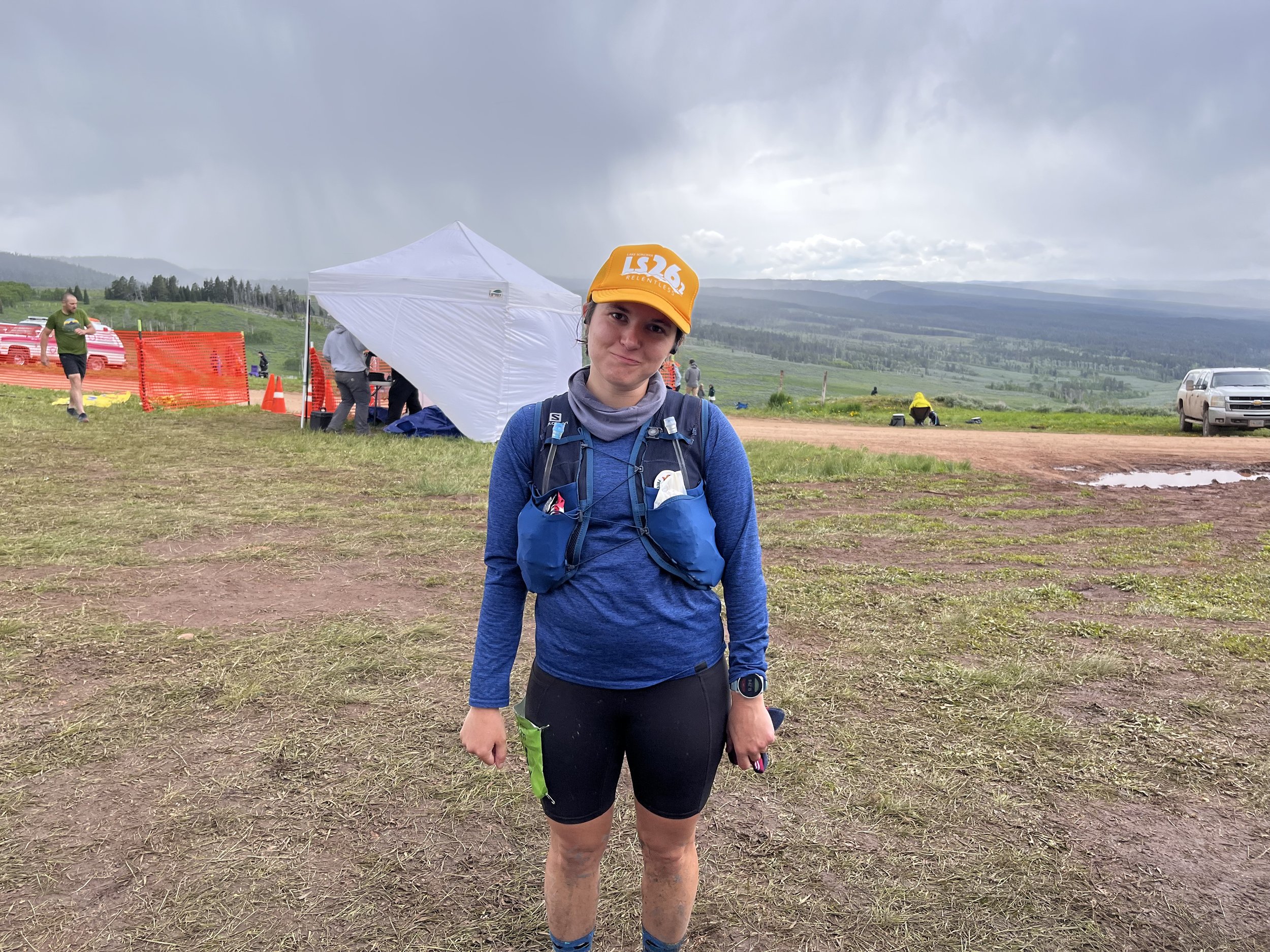Quagmires, aka Bighorn 52 Mile Race Recap
To begin, some thoughts:
There is a problem when you become immersed in the ultra running world: you read about 50Ks, 50 milers, then 100K’s, 100 milers, and more. The 100 milers start to feel like the hallmark of an ultra. A true Ultra. Once, when I told someone I ran ultras, he just assumed 100-milers. Never mind that “ultra” is short for “ultramarathon” which, you know, means anything MORE EXTRA THAN A MARATHON so you’d think I’d feel like an ultra runner after three 50K’s and a 28 mile mountain adventure, but no. No, the brain fails to find place and identity.
So I fake it.
But I keep working up. More miles. More running. More consistency. More big goals. More problem solving. I decide that next, it’s 50 miles. I’ll run a 50-miler. Then I’ll feel like an ultrarunner.
Alternatively, I could be more charitable to myself. There is more to this story than some deep rooted desire to “belong”. There is also a story about finding what feels impossible and doing it anyway. My USDA National Forest Tour took me to Bighorn, and signing up for the 52 mile-distance made it extra special. I wouldn’t have done this race if it weren’t for the Sheridan connection. It was the catalyst for my entire Forest Racing plan. It would take me back to early childhood memories with family in tow and mountains of bittersweet memories. It would nearly double the mileage I’d ever attempted to cover in one day. Bighorn was going to be a tough first 50, though. Truth be told, I had considered doing the 18 or 32 miler instead, but my coach convinced me that I would find this course more scenic and more my style than some other 50’s I was considering. If I really wanted to shoot for a 50, I should shoot my shot at Bighorn. I still agree with his advice. So I took the plunge and signed up, nervous but excited, ready to see what I could do.
In the year before signing up, I had said that I didn’t even think I could handle the training for a 50 miler, let alone the race itself, so I tried to keep that in mind during the build up. My first goal was to get through training healthy. My second goal was to run farther than I had run previously. My third goal was to finish the race. There was no goal beyond that. I could be the last one across the finish line and I’d feel insanely accomplished. If you’re reading this, you probably already know that I didn’t cross that finish line (but I did hit my other two goals!)
I titled my Strava post for this “Baby’s First DNF” because I wanted to display the playfulness and lightheartedness that I desperately cling to when it comes to running but the truth is I was devastated. I made sure no one saw me cry - that was very important to me - but I did, tucked into bed that night, realizing it was 8pm and the finish line was just closing and maybe just maybe I could have been there. Maybe then I would have finally felt proud of myself.
But I’m jumping ahead.
Race Preparation
I planned well, with each drop bag carefully laid out, gear meticulously assembled, and a schedule in place for the weekend. I had read several (somewhat alarming) blog posts on race experiences, studied the course forward and backward, given myself an extra day off work to pack, and an extra day in Sheridan before the race. Training had gone well, minus one disasterous week when the smoke was terrible and some nervy hamstring issue popped up out of nowhere. Otherwise, I had completed several big days on the trails and hammered out the most miles I’d ever run in a week: 60 at the time. I was feeling slow, but strong and ready to do this. In the parking lot of the grocery store the day before we departed, arms loaded with snacks for the upcoming drive, I told my coach over the phone that the one fear I had was missing the cutoffs. I was okay not finishing; that happens and I’d be a fool to think otherwise. Injury, illness, digestive rebellion - any of these could stop me. But I was feeling most self conscious about how slow I was, and the last thing I wanted was to simply be too slow. Too slow to be a real ultrarunner. He told me to just be patient and stick with it. Just keep moving. So I drove to Wyoming.
The day before the race was a little wet and dreary, though the forecast looked much better for the rest of the trip. My sister and I wore extra layers on a shake out run, where we looped the small downtown of Sheridan, dodging pickup trucks and searching for the bike paths that our dad was instrumental in the construction of 25 years prior. Pieces of this town stood out to me from photos, but I had no real memories here. I was 8 years old when we moved from here. We ended our run at a small coffee shop, much newer, standing in line behind a runner wearing a Hardrock 100 hat. I might not be a Big Kid yet, but I was hanging around them. It was both intimidating and exciting. After coffee was packet pickup, bustling with eager runners and helpful volunteers. I didn’t linger too long, as I had few questions. I was indeed very well planned. And I had to be, because logistically speaking this race is a colossal pain in the ass. I steeled myself for the 1:30am (!!) wake up to catch the shuttle to the start.
The rest of the day was a welcome distraction from the buzzing, anxious energy reverberating through my bones. We walked parks, took my nephew to playgrounds, visited our old neighborhood, had coffee with a bunch of my mom’s long lost friends from when we lived here. That alone may have made the trip worth it, watching the group of women swap 25 years worth of stories. Eventually though it was time to eat an early dinner and steal away to bed. It was time to see what I could do.
Race Day
In the pitch black on the bumpy yellow school bus in the middle of the night, I talk to the man sitting next to me. His name is Matt. His 52-miler race is just a stepping stone in his training block for the High Lonesome 100. We bond over this, as the HL100 is a race I volunteer at every summer. I tell him that I hope to see him at my aid station there, mile 82, late July. He tells me good luck for my first 50. We depart as we file off the bus and I never see him again.
The 52 miler starts at Jaws. It is named after the rock formations framing the top of the valley but I think it’s named as such just to instill another layer of foreboding energy. But it’s active up here at 4am, as it is also a huge aid station; we’re at the halfway point for the 100-miler runners who are mostly (but not all) through this point in the dead of night. It’s a bit of an oasis in the darkness. The rest of us, the 52-milers, stand huddled in the darkness, queuing for one final go at a port-a-potty, ready and waiting to move. At the very first faintest light of morning, a race organizer gathers the runners. She gives a brief race rundown, but at this point we better know what we’re getting into. She also tells us that the person who had agreed to come sing the national anthem to begin our race was unable to make it (this does not seem like a deal breaker to me - I’d never been at another race that even sang the anthem. But I guess this is Wyoming). She asks if anyone in the crowd can sing. A woman near me says she isn’t excited about it, but she’ll sing it, and she freaking kills it, absolutely slays, belting the anthem into the crisp valley as 300 shivering runners watch, ready, waiting. We applaud, give out an extra cheer for her bravery. And then we’re off.
We are splashing through the mud from the getgo. Just run through it, that was the advice. I go all in with that approach and at one particularly nasty boggy stretch with mud up to my shins and some runners still trying to tiptoe around the sludge to no avail, someone tells me they like my style. I swell with pride. I Am Grit. Buoyed, I continue into the sunrise, the terrain volleying between mountain singletrack and shoe-sucking mud pits where icy cold water infiltrates my shoes and slows my stride. It is tough going. But there is a moment, more than one actually, when golden sunlight begins to flood across open hillsides, and I find myself thinking, “Yes, this is why I am here. This was the right choice.” So I put one foot in front of the other, into the next quagmire.
And over time, the mud pits become less frequent as I run down to the end of the valley, eagerly awaiting the dry shoes in my mile-18 drop bag. On the way, there are a handful of runners I chat with on the course. “Is this your first 50-miler?” I ask, wide-eyed and bushy-tailed. As I hear more and more responses of “Naw, I’ve done xyz other hard race” I start to think that perhaps I have errored in my judgement. More fear creeps in as pain begins on the top of my left foot. It turns into recognizable Bad Foot Pain that I have had before. It is the kind of pain that almost derailed the Sawatch Ascent the year before. I had not really anticipated that it could show up at mile 14 and this was very disappointing. Okay! No problem. I’ll adapt. I’ll push though. I’ll see what I can change.
I tuck in behind a talkative man for a while, which is a welcome distraction. He does this race every year. When I ask why, he wordlessly motions at all the scenery around us and I think, yeah. Yeah. I understand. I lose him at Mile 18, but I gain dry shoes and socks, more water and snacks, and I head out into the first major climb of the course in good spirits. I’m a little behind my estimated pace, and it’s occurring to me at this time just how close I am to the cutoffs - time limits where they won’t let you continue past a checkpoint- but I’m a good climber so I’m still hopeful. I pass several people on the arduous climb, finally in my element.
Until more unavoidable mud comes back.
The mud! Oh the mud. There are breaks, of course, but as soon as my feet start to dry a bit and the weight of my shoes decreases, there is another squelchy, slick, wet crossing. It’s slippery and all the tiny little muscles in my lower extremities are screaming no more as I maintain footing. Bad Food Pain worsens. The course turns to rolling hills and I continue to move okay on the uphills, slow but steady, but I am not able to push much on the downhill because that is when the searing pain really steals the show in my foot. And then there is yet again more mud to contend with. As it were, the one time I cried on course was maybe 8 hours in, as I stomp in the mud and say out loud “I don’t WANT to run in the mud anymore” like a toddler. Does it count as a temper tantrum if no one is around to watch you throw it?
The clock is ticking, time moving faster than the miles. I put on music, ironically listening to Time by Pink Floyd. Perhaps not even 10 minutes after this song ended, I came up behind a man on the course. I greet him and he lets me pass, but not before taking off his headphones. He says to me “I’m sorry, I couldn’t tell there were footsteps behind me! I’m listening to The Dark Side of the Moon and the sounds all blend together.” Astonished, we bond over Pink Floyd and then I carry on, forward. Time is starting to work against me.
At another low point, mile 25, I meet a woman at the Cow Camp aid station who worked with my dad 25 years ago. I had known she would be there, and it was worth 5 minutes of chatting as I drink some ginger ale and down more salty potato chips. I can’t linger long, there isn’t time, I’m now dangerously close to the cutoffs, but her warmth fills me with gratitude. I need that, because darker clouds are building in the sky up ahead, my anxiety deepening, and my foot pain is intensifying. I don’t remember at what point it occurs to me that I am almost certainly going to miss the next cutoff, but it starts to sound nice. I could rest this stupid foot. If I made the cutoff, I’d have to do another 20 miles of this sharp stabby cringy pain. Worse, I’d maybe get stuck in an afternoon thunderstorm - a somewhat outsized fear of mine. If I miss the cutoff, I am free.
But I keep moving forward, the only option I have, alternating between running and walking. Alternating between the dread of continuing, and the reality that I wouldn’t even get the choice. I still don’t know if it was the foot pain that truly slowed my pace, or if I just didn’t want to continue. Self-sabotage is a tricky game. The 3:00 cutoff came and went, as I climb up to the aid station, barely too late (but definitely, absolutely too late). My sister and husband cheer for me as I approach, they do not pity me but walk with me to the tents, telling me “good work” but I don’t feel that I deserve it. The thing I dreaded the most was happening - I wasn’t tough enough. I wasn’t that much of an ultrarunner.
In the end it wasn’t a big injury or an epic breakdown. I just got cut because I went too slow. I went out with a whisper. I Am Not, in fact, Grit.
Afterthoughts
You want to be the gracious loser, the person who finds joy in any situation, who stays out at the afterparty cheering for those who did have it in them. And I do try! I take my silly little pouting photo, I am kind to the volunteer who cuts off my bib, who is apologizing that I can’t continue on the course (it’s definitely not her fault! That’s on me). I thank her for being out here. I apologize to my sister and husband, who had been waiting for me for hours with hopes of sending me on my way to a finish. Instead, they drive me back into town. I said encouraging things to everyone I saw as I hobbled around the finish line party, but the twinge of jealousy, of self-hatred, of “I don’t deserve to be here” was more real than I would like. I just wanted to be tough enough.
It’s silly, of course; I wasn’t the only one who didn’t make it, not even close. I learned later that there was something close to a 40% DNF rate, which is a bit insane. I met another fellow DNF’er at the finish line, a woman I had talked to at the back of the pack on course. We both know there is no way either of us made it there on foot. She shrugs. “You get some, you lose some,” She says. I wasn’t quite there mentally, but I’d get there.
I know DNF’s are common in this sport. Anyone who races enough ultras will experience it. When it’s a little bit crazy to even finish the thing, of course there would be those who did not. There was nothing special about my DNF and it was disappointment I’d just have to contend with and carry on. And I did! I did carry on, obviously. I have supportive friends, though their words of encouragement didn’t feel right for quite awhile. More impactful were words from my coach, who spoke to me with a kind of genuine understanding that I found deeply valuable. It’s hard to build up to something big and then…miss. But it’s just sport, and a year later I feel no such negativity.
I settled on understanding that I did the best I could at my current state. My cardio fitness may have been capable of more, maybe, but my foot and my mind were not. I wasn’t tough enough to finish the race that day, but I had the courage to start. Which is probably the thing that actually makes me feel most like an ultrarunner: I took a risk and tried for something big. Thing is, you have to take chances to find your limits. And limits are temporary barriers.
Kiiiiind of like mud.




